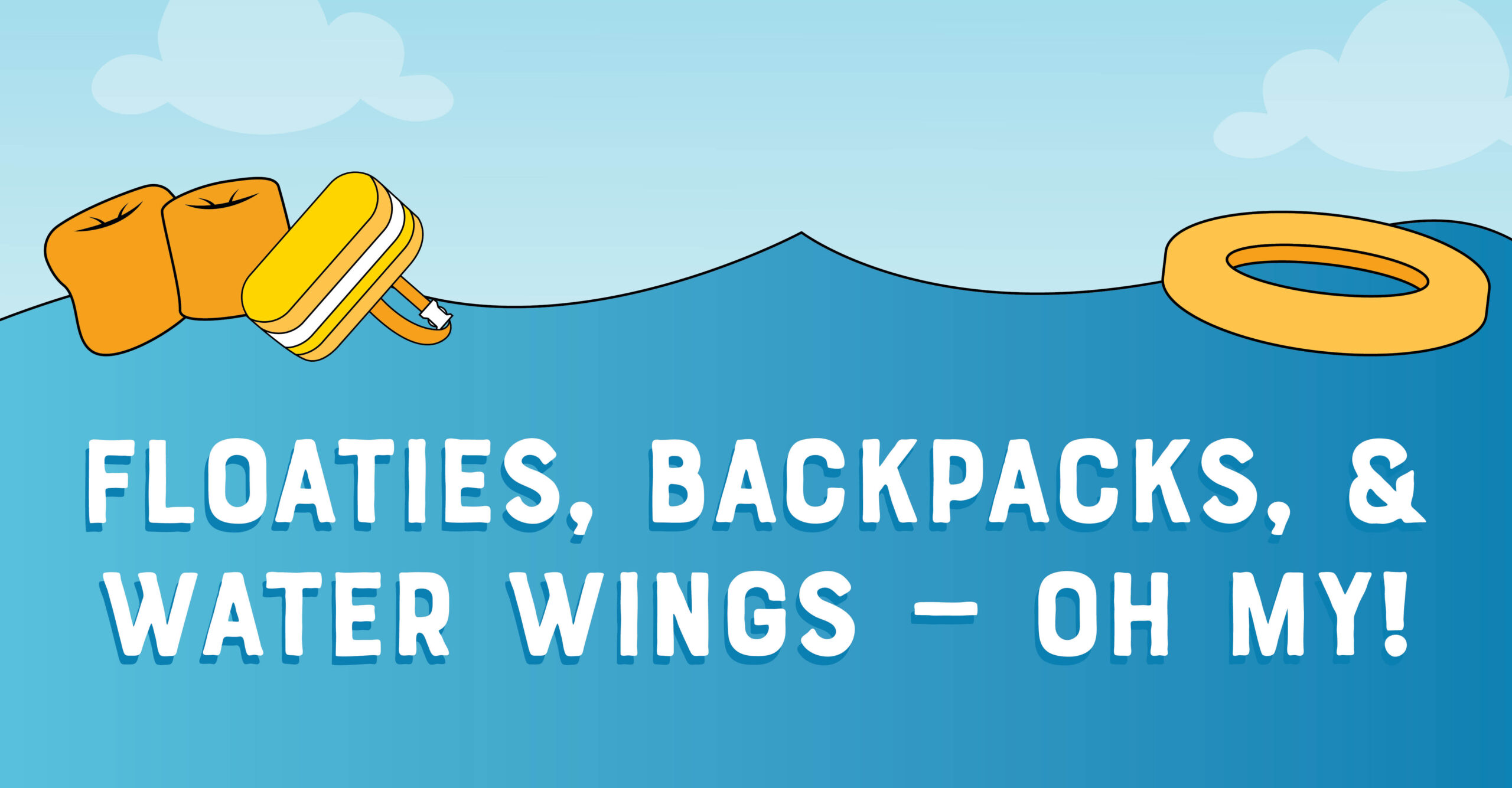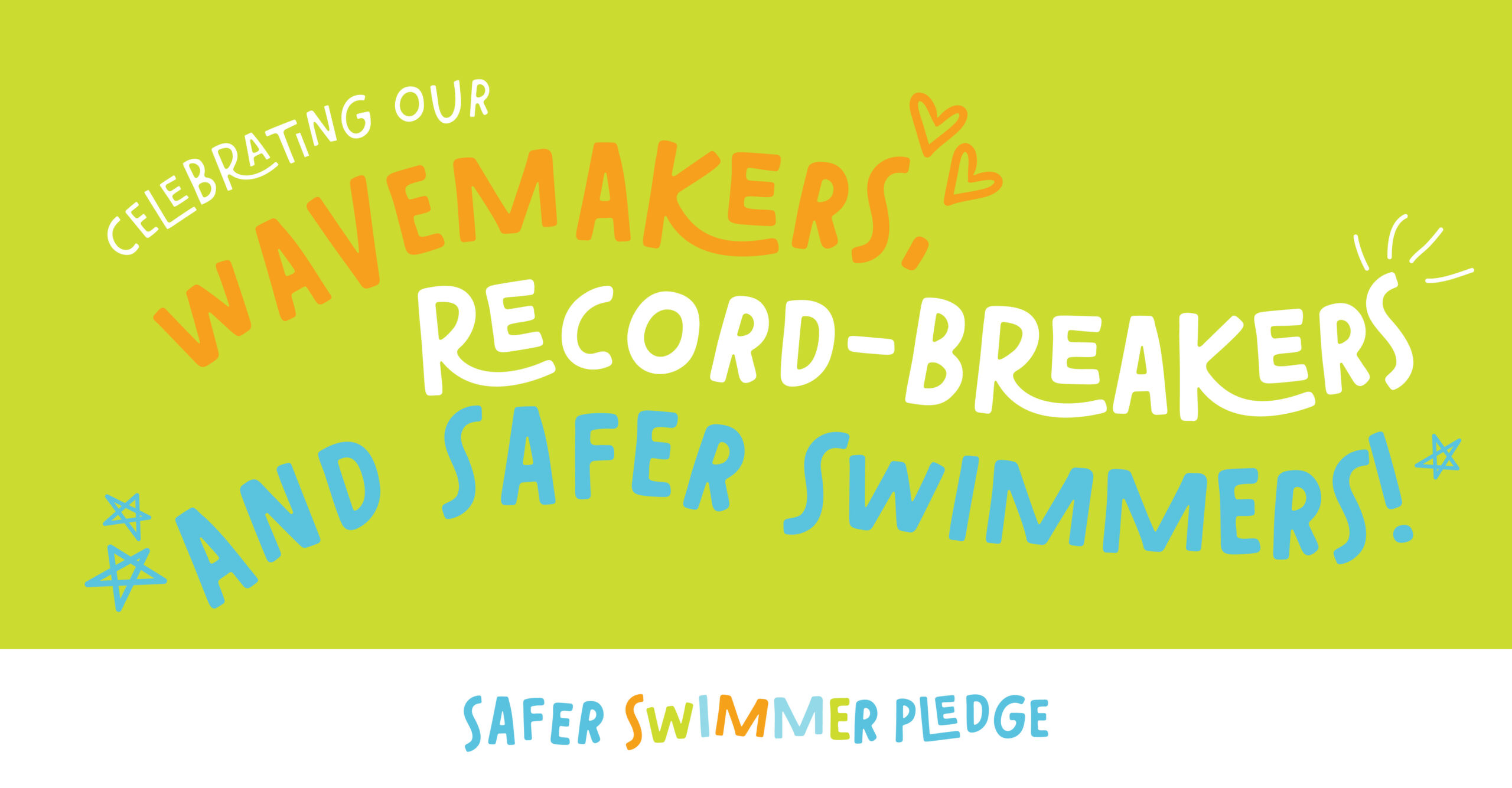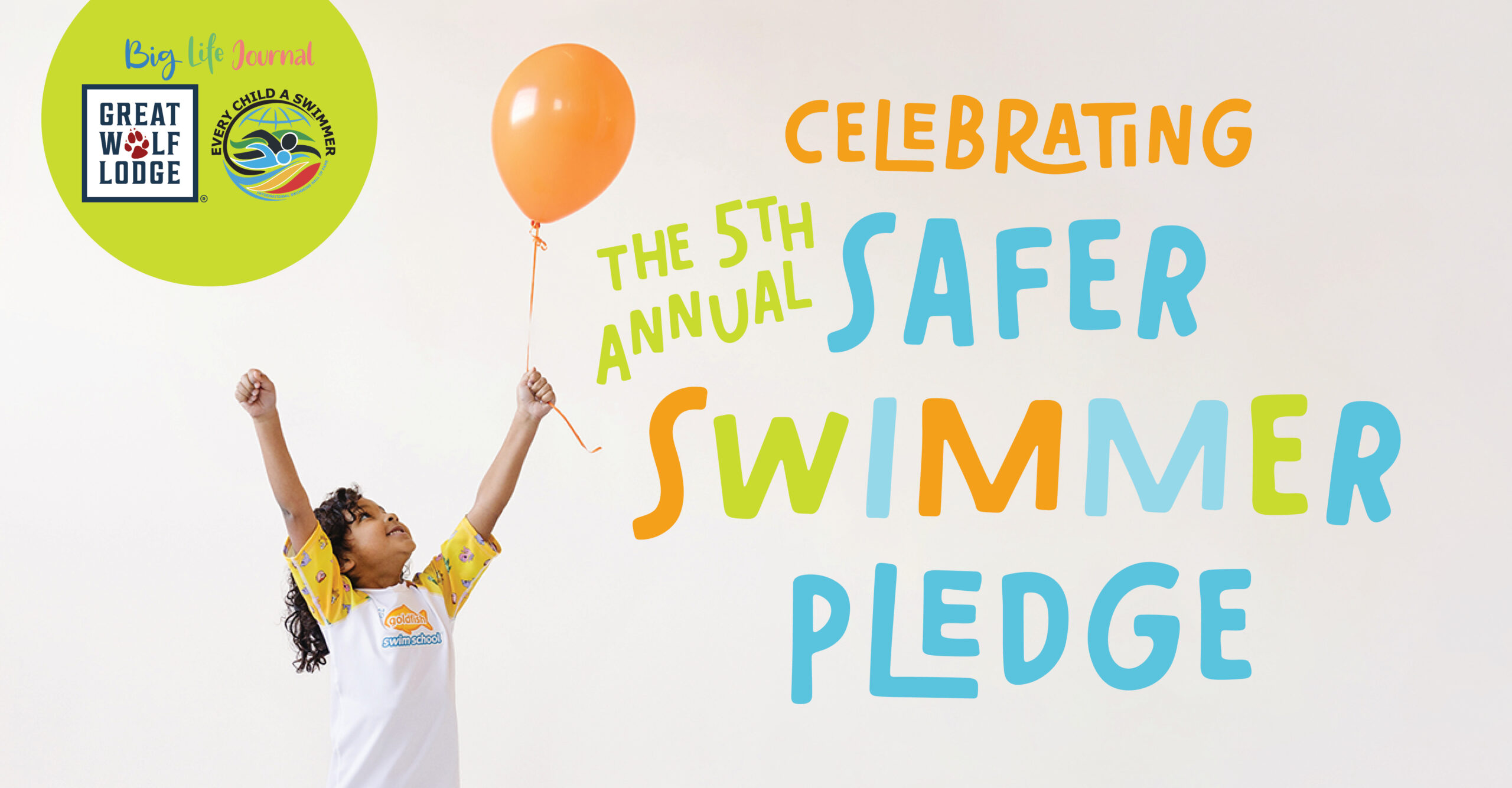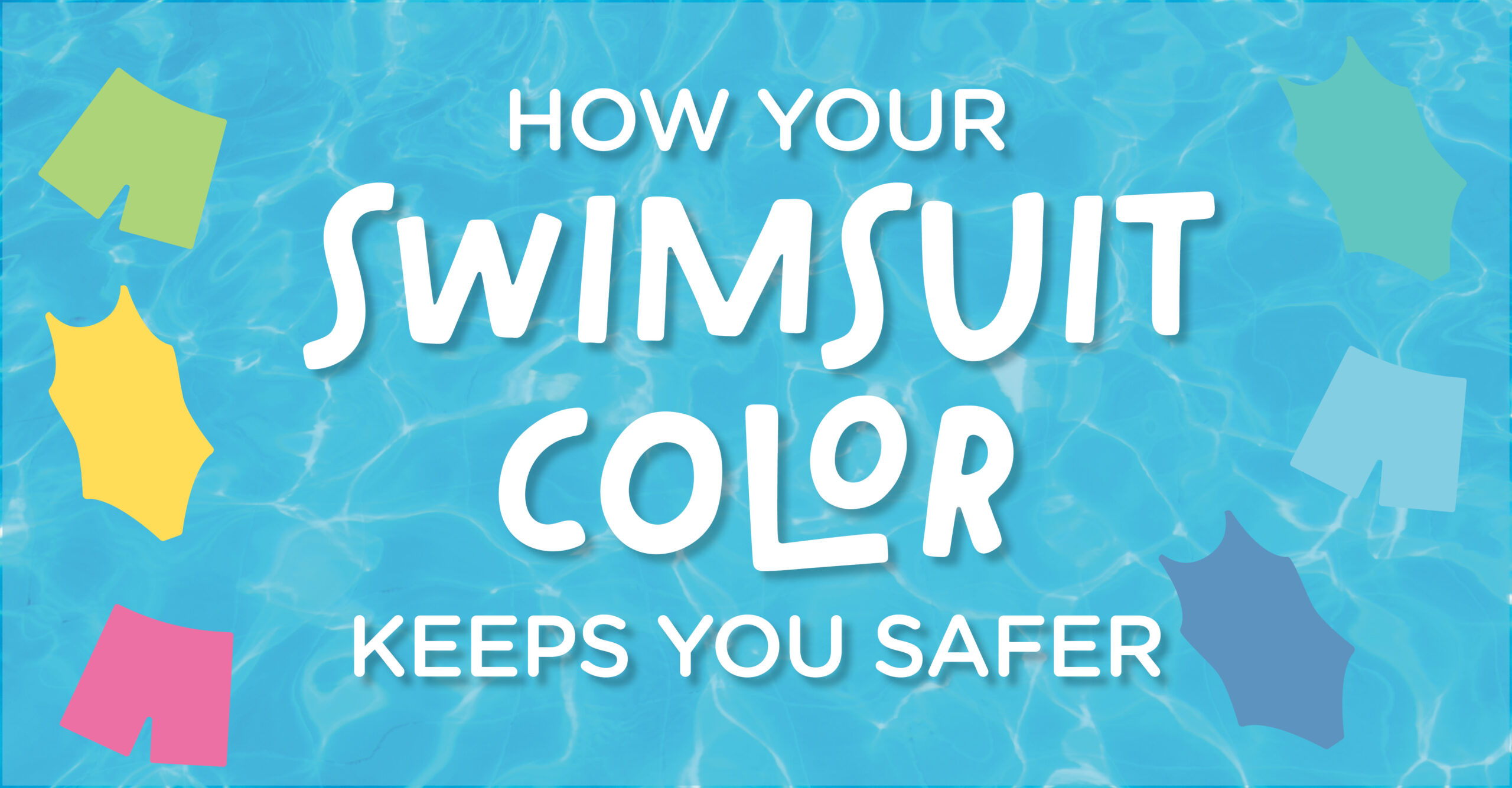Floaties, Backpacks, and Water Wings – Oh My! A Flotation Device Deep Dive

Whether you’re splashing around the backyard pool or headed to a much needed beach vacation, there’s no doubt your kiddo is excited to jump in and have some fun! For many of our little ones, they may be ready to make a splash before they’ve mastered their swimming skills. While it’s tempting to suit them up with the latest floaties and water wings, there are far more drawbacks to these items than you may realize.
What Is Proper Swim Posture?
For your little fish to be the most comfortable (and safe!) while they’re busy making waves, it’s important for their bodies to be horizontal. A horizontal body position in the water promotes not only proper muscle memory to master those swim skills, but also allows them the flexibility to rotate to take a breath when needed!
Pool floaties and vest-water wing combos are not a good idea for kiddos because they teach incorrect posture and swimming habits. These flotation devices align a child in a vertical position which is known as the “drowning position,” and prolonged experience in this position develops incorrect muscle memory. A child who thinks that staying vertical in the water is the correct posture may be in danger if they enter the pool without floaties.
Additionally, while backpack-style swimming aids situate your little one in a horizontal position, they can make it difficult to maneuver properly. These floats prevent kiddos from rolling over to take a breath, and instead force them to remain face-down in the water.
Coast Guard-Approved life jackets, on the other hand, give your little one the assistance they need to remain horizontal in the water while they explore. This will give them the chance to build good swimming habits that they will carry with them throughout their lives!
Materials Matter!
When it comes to inflatable floaties such as water wings, they are exactly that – inflatable! We’ve all had a birthday balloon shrivel and shrink after the party has come and gone, and we’ve had our fair share of them pop in our face, too! Just like these balloons and any other inflatable, water wings can get punctured and become worn down over time.
The vinyl material that most floaties are made of comes in plenty of bright, fun colors, but don’t let that fool you! They can become extremely slick in the water, and it’s not unusual for pool floaties to slip off once they get wet.
Backpack floaties, which are secured by one strap around the waist, are unlikely to stay in their intended place. The single strap design allows the float to easily twist around your kiddo and end up in potentially dangerous positions – on the child’s stomach, too high on their chest or back, or completely off entirely!
A proper, Coast Guard-approved life jacket will have multiple buckles, including a handful along the torso and one that goes between the child’s legs. These ensure that, when properly fitted, the life jacket will not move into a position that puts the child in danger.
Natural Movement is Necessary
Water wings, backpacks and vest-water wing combinations tend to look more comfortable for your little fish to parade around the pool in, but it’s actually quite the opposite!
These flotation devices tend to restrict your kiddo’s natural movements, making it more difficult to perform important skills such as pulling paddles and climbing out of the pool. Not only can this lack of mobility create poor swimming habits, but it can also be incredibly dangerous!
Believe it or not, the “bulky” life jackets left on the store shelves give your little fish the freedom to move naturally as they learn and grow on their swimming journey! The structure of these jackets allow your child to feel snug and supported while also giving them full range of motion to work on their pulling paddles and kicks all day long!
False Sense of Swimming Ability
Here at Goldfish, there’s nothing we love more than a happy, confident kiddo, but confidence doesn’t always equal competence.
Children who continuously use flotation devices of any kind may form the belief that they can swim independently. This false sense of confidence can lead to kiddos jumping in without any flotation device, which can be life-threatening for our little ones that have yet to develop their swimming abilities.
Instead, the National Drowning Prevention Alliance recommends that a Coast Guard-Approved life jacket be used as an additional layer of protection, not as a substitute for learning to swim! While drowning remains the leading cause of death for children 1-4 years old, participating in formal swim lessons can reduce that risk by up to 88%!
Fear of Swimming Without Them
On the other hand, children who have become dependent on their favorite floaties may have a difficult time adjusting without them. This can lead to fear and hesitancy as they begin their learn-to-swim journey, making it tough for them to adjust without their familiar swimming gear.
This anxiety is something many of our little fish go through (believe it or not, we see it everyday!), but it can be worked through with plenty of time and patience. With the help of their parents, their favorite instructors, and a variety of anxiety-reducing tips, they’ll be ready to jump right in before you know it!
Alternatives to Pool Floaties
Stray away from floaties and learn how you can help your little fish be safer in and around the water!
- Always Be Nearby: If your little one is in the water, you should be, too! Being close to novice swimmers is the best way to keep them safe, and remaining an arm’s length away allows you to remain vigilant while they gain independence and confidence.
- Fin, Fin, Belly, Flipper: One of the best water skills your child can learn, regardless of age, is how to safely climb out of the water. By practicing Fin, Fin, Belly, Flipper and reiterating water safety tips, they will develop their muscle memory and know to reach for the wall and pull themselves out!
- Practice Swimming to the Wall: To build up your child’s swim skills (and safety knowledge, too!), have your child practice letting go of the wall and paddling toward you. Once they have become comfortable with this exercise, have them try swimming back to the wall! Golden Tip: even when your kiddo becomes comfortable swimming to and from the wall, you should still remain within an arm’s length of them at all times!
- Build Their Back Float: Believe it or not, a back float is a valuable, life-saving skill! By working with your kiddo to get them comfortable on their back, you’re helping them understand that being in a back float position allows them to take a breath and relax their muscles, especially if their end goal is to reach the nearest wall.
- Use a Coast Guard-Approved Life Jacket: A life jacket that is Coast Guard-approved is the way to go! These devices must meet specific criteria and go through extensive testing before being approved and advertised as such. Life jackets are also not a one-size-fits-all item – they must be properly fitted to your kiddo! To fit your child in their new life jacket, buckle them in fully with all straps – ensuring the jacket is snug but not too tight- and lift them by the shoulder of the life jacket. If the child’s chin and ears don’t slip through, then your kiddo has found their perfect fit!
- Take Swim Lessons: With all of these different options for personal flotation devices, nothing helps your little fish be safer in and around the water more than learning to swim! By taking formal swim lessons, your kiddo will get the chance to develop vital water safety skills that will last their whole lives (and have plenty of fun in the process!).
If you’re ready to ditch the floaties and water wings, jump into a golden opportunity with your local Goldfish Swim School! No matter their age, lessons at Goldfish Swim School help children build confidence and conquer new skills all while growing into happy, healthy (and safer!) little humans!



